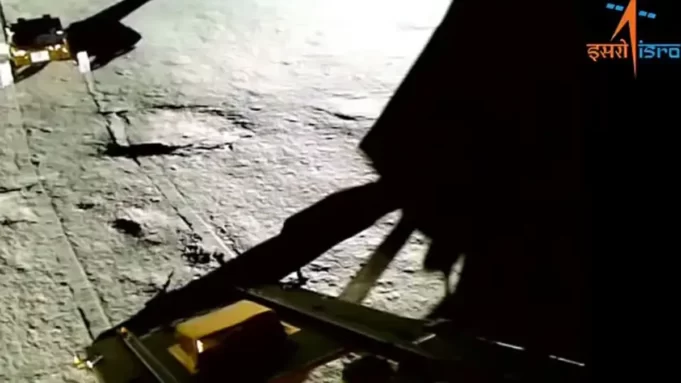“The cause of this event is being looked into,”
Bengaluru, September 1: The Indian Space and Research Organisation said on Thursday that a natural occurrence was captured near the south pole of the moon by the Pragyan Rover module of the Vikram lander.
However, efforts are being made to identify its origins.
The In-Situ Scientific Experiments Instrument for the Lunar Seismic Activity (ILSA) payload on the Chandrayaan 3 Lander, the first Micro Electro Mechanical Systems (MEMS) technology-based instrument on the moon, has recorded the movements of the Rover and other payloads, according to ISRO, which posted the information on ‘X’ (previously known as Twitter). On August 26, 2023, it has also recorded what seems to be a natural occurrence. The cause of this incident is being looked into.
Earlier on Tuesday, ISRO said on its website ‘X’ that the Rover has verified the existence of sulphur on the moon.
Through the use of the first-ever in-situ measurements, the Laser-Induced Breakdown Spectroscope (LIBS) instrument on board the Rover conclusively shows that sulphur (S) is present on the lunar surface near the south pole. As predicted, Al, Ca, Fe, Cr, Ti, Mn, Si, and O are also found. The search for hydrogen (H) is ongoing, according to ISRO.
On August 25, the Chandrayaan-3 Rover descended from the Vikram lander to the lunar surface.
The Chandrayaan-3 mission consists of three modules: the propulsion module, which moved the lander and the rover module into a 100-kilometer lunar orbit; the lander module, which carried out the lunar craft’s soft landing; and the rover module, which is used to explore the moon’s surface.
On August 23, India made a huge step forward when the Chandrayaan-3 lander module successfully touched down on the moon’s South Pole, making it the first nation to accomplish the legendary accomplishment.
After the US, China, and Russia, the nation became the fourth to accomplish a successful lunar landing.
ISRO is preparing to launch its Adity-L1 solar mission on September 2. India’s first solar mission to study the sun is now underway.










